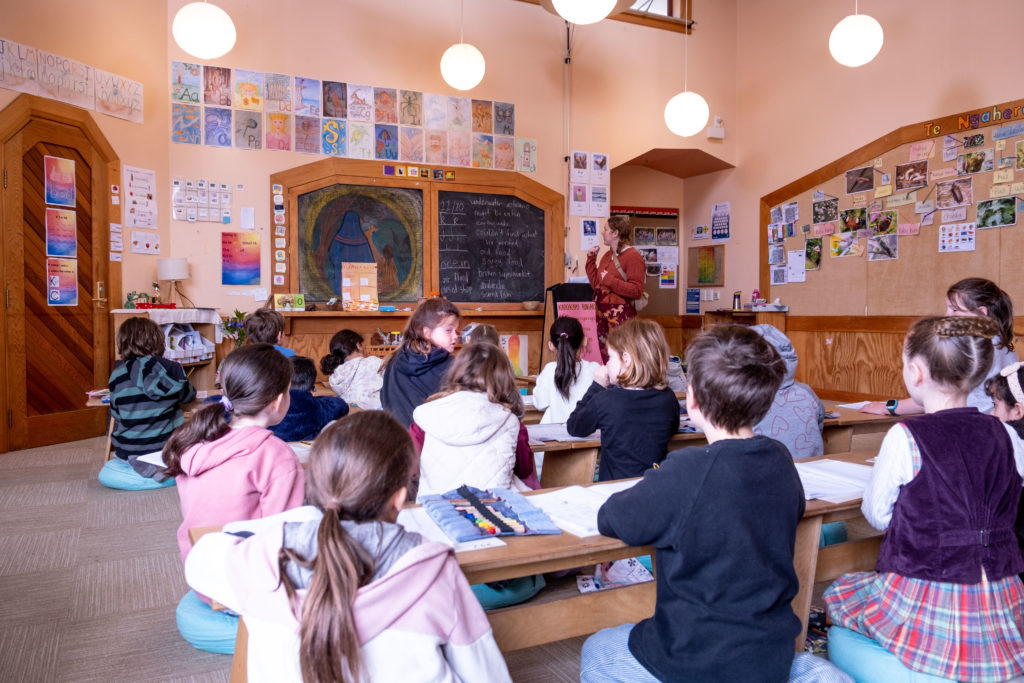
the name given by Steiner to his ‘science of the spirit’ where anthropos refers to ‘human’ and soph(y)ia to ‘wisdom’; an approach that uses scientific method to examine the activity and effects of the sense-free (spiritual) domain in relation to the human being.
according to Steiner’s use, this is an aspect or area of activity within the human being that enables the soul to experience sensation, feelings and consciousness.
a threefold description of the human, where ‘body’ refers to the physical material body, the ‘soul’ refers to the faculties of thinking, sentient feeling and purposeful activity, and ‘spirit’ refers to an enduring, eternal and invisible essence of the individual that is the person.
according to Steiner’s use, an aspect of the human being that refers to the unique individuality of that person; the capacity to name oneself ‘I’ as a separate entity to ‘Other’.
a living, rhythmical capacity for a living body (plant, animal, human) to grow and reproduce, to excrete and secrete, to ingest and digest and to move.
a form of artistic movement expressing visibly the sounds of speech and musical tones. Rudolf Steiner and Marie von Sivers evolved this movement form with the help of their initial students, from the end of the first decade of the twentieth century. Eurythmy is now used educationally and therapeutically, as well as being a performance art.
the building situated in Dornach, Switzerland, that is a performance and conference centre, as well as the administrative centre for the world-wide General Anthroposophical Society. The first Goetheanum was built by volunteer international labour during the First World War, and consisted of two interlocking wooden cupolas. It was destroyed by arson on New Year’s Eve, December 31, 1922.
The second, present building is formed of concrete and was completed in the late 1920s. Both buildings were designed by Rudolf Steiner and are considered among the 1000 selected classics of world architecture by www.greatbuildings.com.
a form of learning described by Rudolf Steiner that involves activity in the limbs; today we might refer to such learning as ‘kinaesthetic learning’, but Steiner’s use also includes a way of encouraging learning through the forces of the (unconscious) will activity.
that system within the body that includes all limbs and the metabolic areas. Steiner suggested that this aggregated ‘system’ of the body expresses and is most easily activated by the unconscious will forces of the living body.
a ‘mediating’ system within the body that includes the breathing and circulatory systems, centred but not exclusive to the area of the body encompassed by the rib cage. Steiner suggested that this ‘system’ is most closely associated with activity in the realm of feelings.
a reference to that physiological domain centred in the head but distributed throughout the body. Steiner suggests that this system is most involved in the activity of thinking and consciousness.
that insubstantial eternal essence of everything that includes the ‘archetype’ (according to Goethe) and ‘Idea’ (according to Plato), and refers to those qualities of being-ness which may not be perceived in this physical, material sense-world.
Steiner’s reference to the research approach of using scientific method in exploring the activity and effect of the spiritual. An alternative name sometimes used by Steiner in place of ‘anthroposophy’.
those schools (over 1000 world-wide) using Steiner’s indications for education; the first begun in September 1919 in Stuttgart, Germany, and called Waldorfschule. In
New Zealand, there are eleven schools using Steiner’s indications and which may call themselves ‘Steiner schools’, ‘Waldorf schools’ or Steiner Waldorf schools.
a term Steiner uses in reference to three qualities; in the body (sense-nerve, rhythmical, limb-metabolic), in the soul (thinking, feeling, will), in the realm of consciousness (waking, dreaming, sleeping), where there are two ‘opposite poles’ and a central dynamic mediating region.
the first school to work with Steiner’s indications for the formal education of the child; based in Stuttgart and enabled by Emil Molt the owner-manager of the Waldorf-Astoria factory. At a time when unemployment was reaching epidemic proportions after the First World War, Molt asked Steiner to initially begin some adult education with the factory employees, and consequently began a school for the children of these employees, as well as other local children. The school opened to 256 students over 8 classes in September, 1919; 150 were children of the workers at the Waldorf-Astoria factory. By 1928 there were over 1000 students in 28 classes covering the 12-year curriculum (Easton, 1980, p. 262